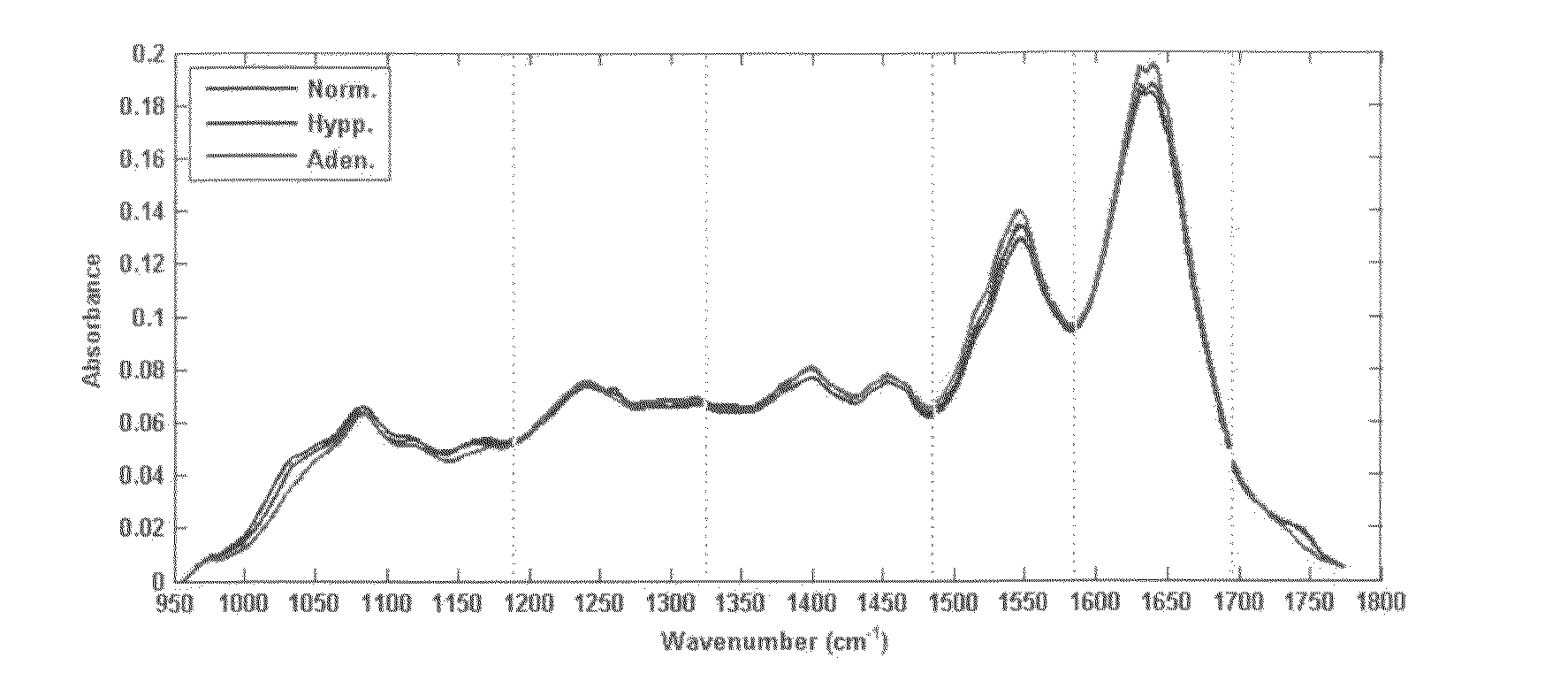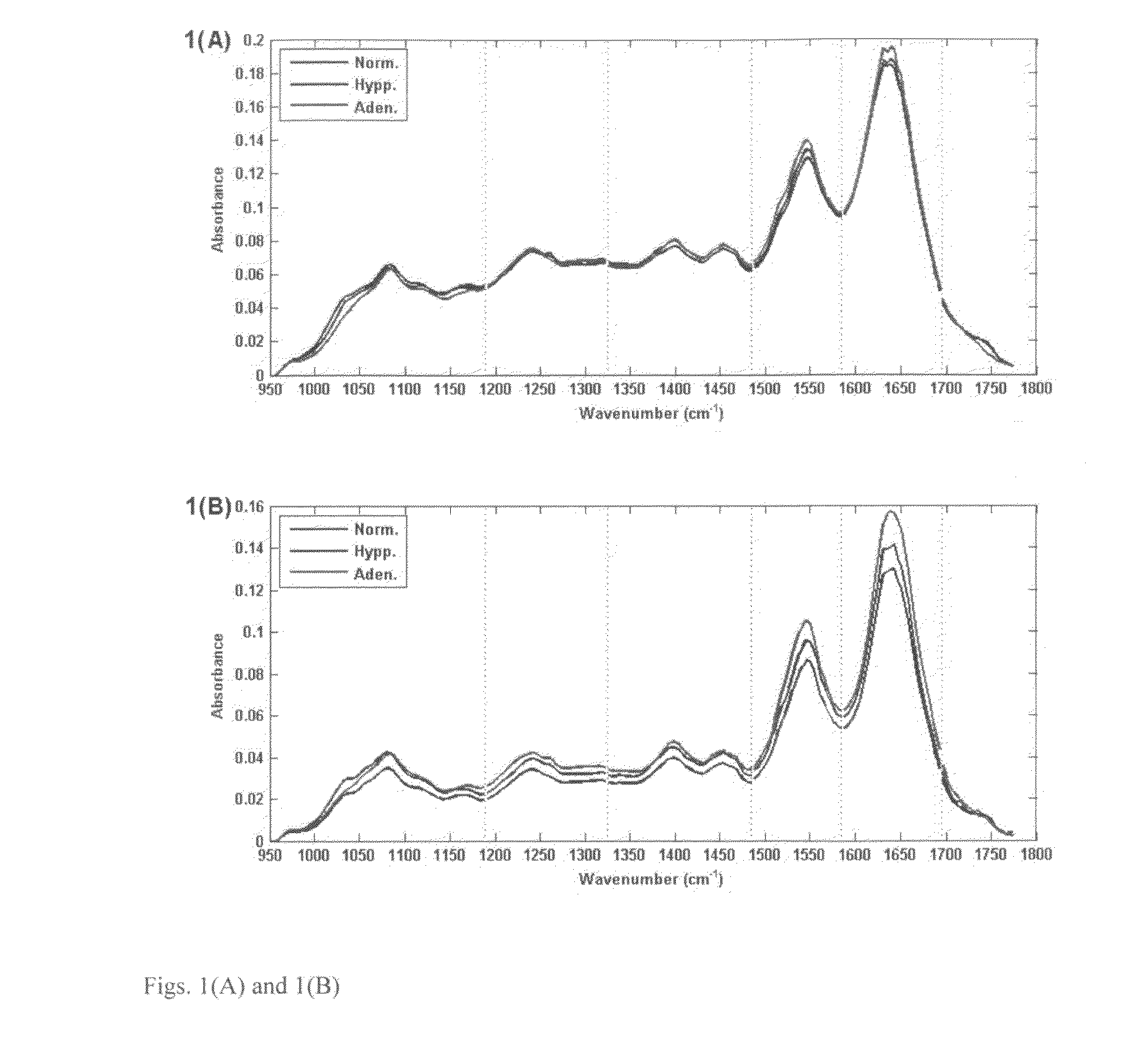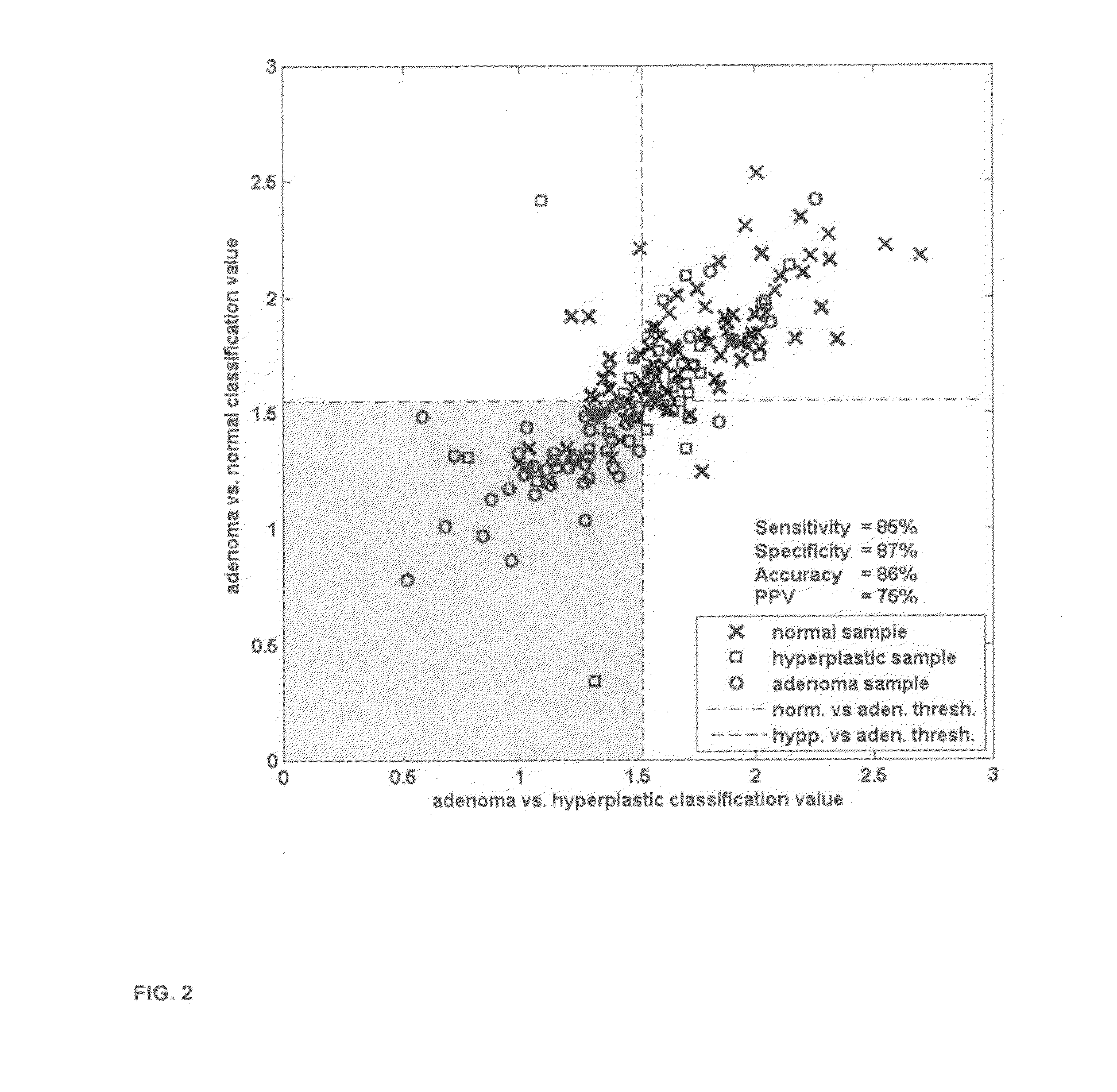Process and device for detection of precancer tissues with infrared spectroscopy
a technology of infrared spectroscopy and tissue detection, which is applied in the field of infrared spectroscopy detection of precancer tissues, can solve the problems of inability to obtain spectra covering all the necessary wavenumbers (or wavelengths) in a subrange, difficult to provide sufficient ir light at the end of the probe with a broadband ir source, etc., and achieves better signal-to-noise ratio, better results, and robus
- Summary
- Abstract
- Description
- Claims
- Application Information
AI Technical Summary
Benefits of technology
Problems solved by technology
Method used
Image
Examples
example
[0047]Data collection was performed at the endoscopy unit at the Stanford Medical Center and at the Veteran's Administration Palo Alto Health Care System. An endoscopy procedure was performed in the routine fashion using a standard video endoscope. When a hyperplastic or adenomatous polyp was identified on the mucosal surface by routine endoscopy, a pinch biopsy was taken of the lesion, and from an adjacent normal site. For each specimen, the gastroenterologist identified the biopsy as coming from either normal tissue or a polyp, without specifying the type of polyp. This information was recorded along with the location of each biopsy within the colon. Immediately after the endoscopic examination, the specimens were transported to the FTIR spectrometer located within the endoscopy center. Ambient water was removed from the surface of specimens by blowing cool air for approximately 10 to 20 seconds. The samples were then scanned using a Thermo Electron Nexus 470 spectrometer within a...
PUM
 Login to View More
Login to View More Abstract
Description
Claims
Application Information
 Login to View More
Login to View More - R&D
- Intellectual Property
- Life Sciences
- Materials
- Tech Scout
- Unparalleled Data Quality
- Higher Quality Content
- 60% Fewer Hallucinations
Browse by: Latest US Patents, China's latest patents, Technical Efficacy Thesaurus, Application Domain, Technology Topic, Popular Technical Reports.
© 2025 PatSnap. All rights reserved.Legal|Privacy policy|Modern Slavery Act Transparency Statement|Sitemap|About US| Contact US: help@patsnap.com



